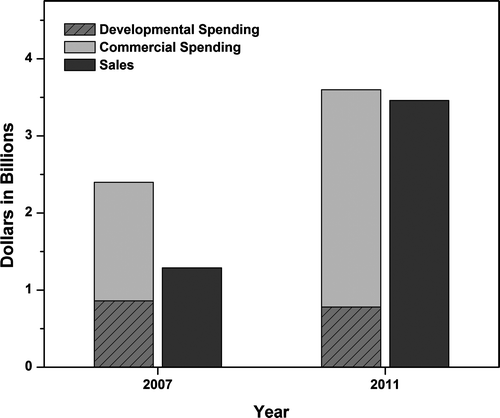TISSUE ENGINEERING
from petri dish to patient

IMPACT
The National Institutes of Health (NIH), a government-owned section of the United States Department of Health and Human Services, is a major funder of biotechnology research and has grants geared towards supporting tissue engineering, specifically from their branch of the National Institute of Biomedical Imaging and Bioengineering (NIBIB).
The NIBIB not only funds the production and development of new tissue engineering products, it also allocates funds towards technology that furthers the field by making the process more efficient, functional, and effective.
For example, the NIBIB is currently funding Anthony Atala and his team at the Wake Forest University Health Sciences for their project on “Studies in Translational Regenerative Medicine.” This grant awards $183,979 to the project, but the actual value of a grant can vary greatly depending on the project.
NIH and NIBIB
The federally owned National Science Foundation (NSF) is geared towards funding projects that further scientific progress and is a major contributor to many scientific disciplines. While it is not involved in medicine, the NSF does supplement research for biomedical engineering, which is an umbrella term under which tissue engineering operates.
The Biomedical Engineering (BME) funding program supports the development of innovative approaches to tissue engineering, like new materials and applications of tissue engineering in research and medicine. For example, the NSF is currently awarding $100,412 to a project called, “Enhancing bone regeneration by mimicking the osteogenic niche,” led by researchers at Texas A&M University. The NSF funds many research efforts like this one that improves upon an established method.
NATIONAL SCIENCE FOUNDATION



CIRM
The California Institute for Regenerative Medicine (CIRM), known as “California’s Stem Cell Agency,” funds stem cell research in both the commercial and university sectors that can be applied to tissue engineering. CIRM allocates a total of $1,971,430,433 to research in all fields related to stem cell research. These funds amount to millions of dollars for each project, like the $4.4 million grant awarded to a team at the University of California Davis that is developing an airway scaffold made using stem cells and tissue engineering that could cure airway stenosis.


FUNDING and GRANTS
The advent of tissue engineering both benefits the patients by increasing the efficacy of the transplants and also decreasing the total cost of the operation and follow-up medical procedures. Between 1987 and 1989, the 4,166 total liver transplant patients paid a total of $960 million over five years, which amounts to about $230,437 per patient.
However, by transplanting a bioengineered liver, the total cost over five years is estimated to be about $250 million for 4,166 patients, or about $60,000 per patient. This savings of $710 dollars, cutting the costs by almost 75 percent, would be a major improvement on the current method of organ and tissue transplantation since more people could have access to the expensive medical procedures.
(W5.10)
This estimate is supported by the price of corneal endothelial transplantation: tissue-engineered transplants cost $880 to , while the traditional transplants cost $3710. Thus, the cost of the operation decreased by more than 75 percent, which reflects the estimate above.
(W5.11)
The dramatic fall in price would make many life-saving procedures available to more people who need them. As tissue engineering advances, the process may become even more cost efficient, which could be the impetus for the rise of tissue engineering as the primary method of transplants and medical treatments.
AFFORDABILITY


TISSUE ENGINEERING IN THE MARKET

The rise of tissue engineering as a viable medical and scientific practice has led to the concurrent rise of the field in the commercial market. While TE companies had net losses of revenue in 2007, the bar graph (to the right) shows that as time has passed, the confidence in TE in the market has grown, leading to a near equal amoung of sales and spending in 2011.
Furthermore, as commercial confidence grows, so does the size of the market. As more and more revenue comes in for tissue engineering, more technology will be developed, thus instigating a rise in available tisse engineering treatments and methods. More varied and advanced tissues and organs can be created as time goes on.
Bar graph comparing total sales to total spending in 2007 and 2011 (I5.8)
SOCIETAL
WHO BENEFITS FROM TISSUE ENGINEERING?

The simple answer is "everyone." From patients to scientists, families and institutions, the effects of tissue engineering are widespread.
Patients who suffer from severe injuries or chronic diseases enjoy a better standard of living with the creation of better tissue engineering technology.
Scientists understand more about diseases by using tissue engineering for modeling.
Families are less burdened by the formerly crushing costs of surgery and transplantation.
Institutions can increase employment and expand their research, as well as take advantage of the growing market for tissue engineering.
(I5.9)




